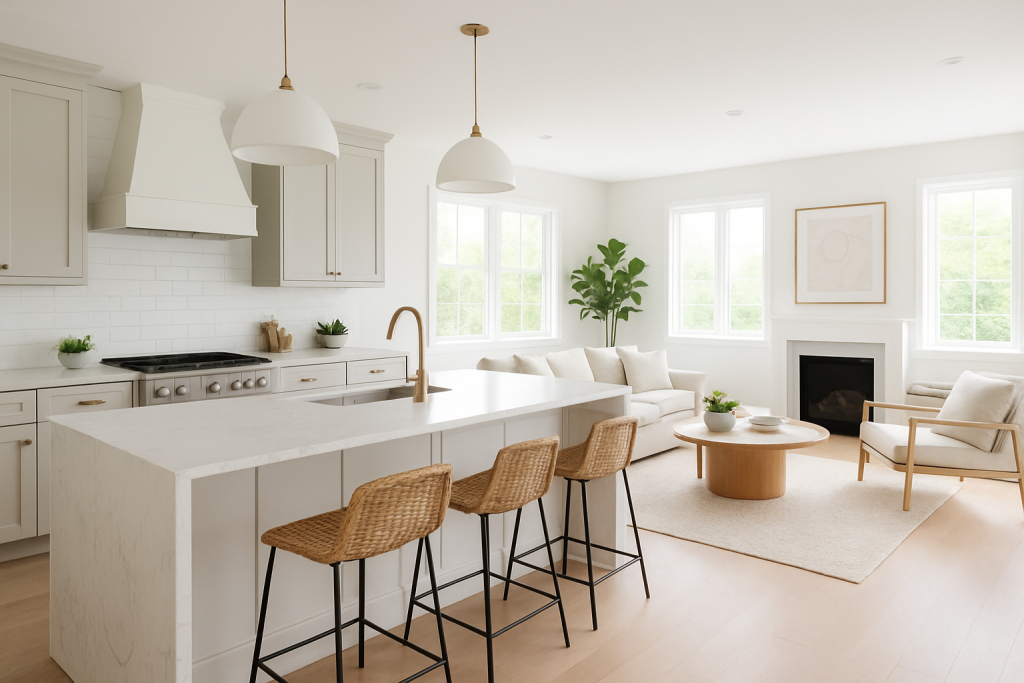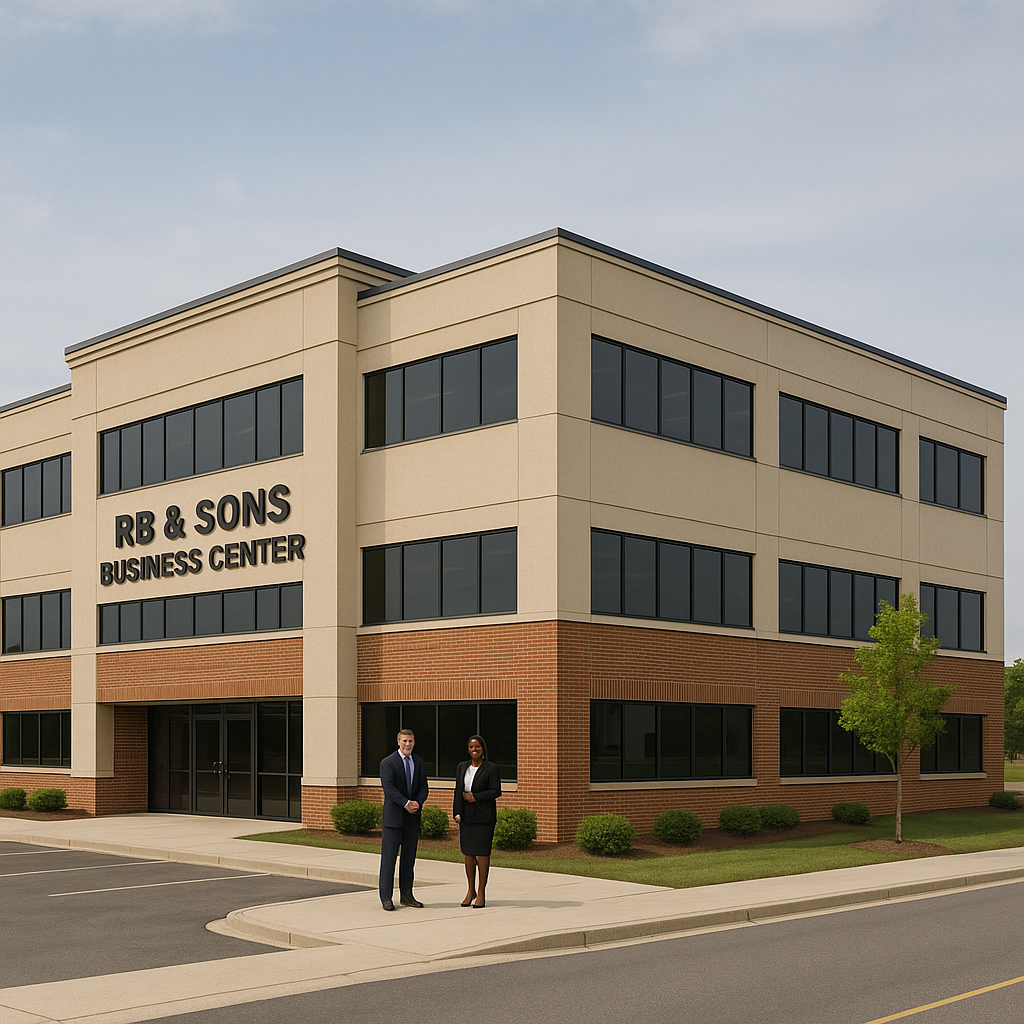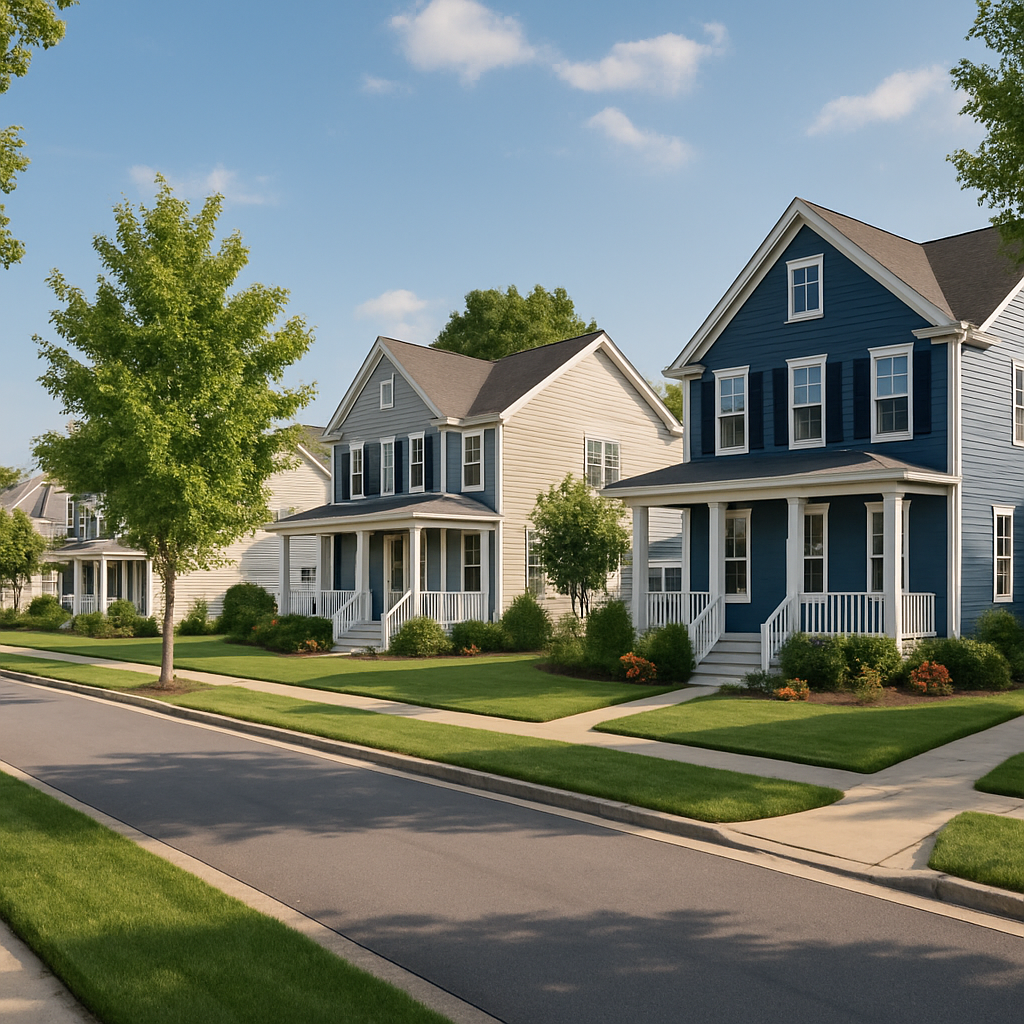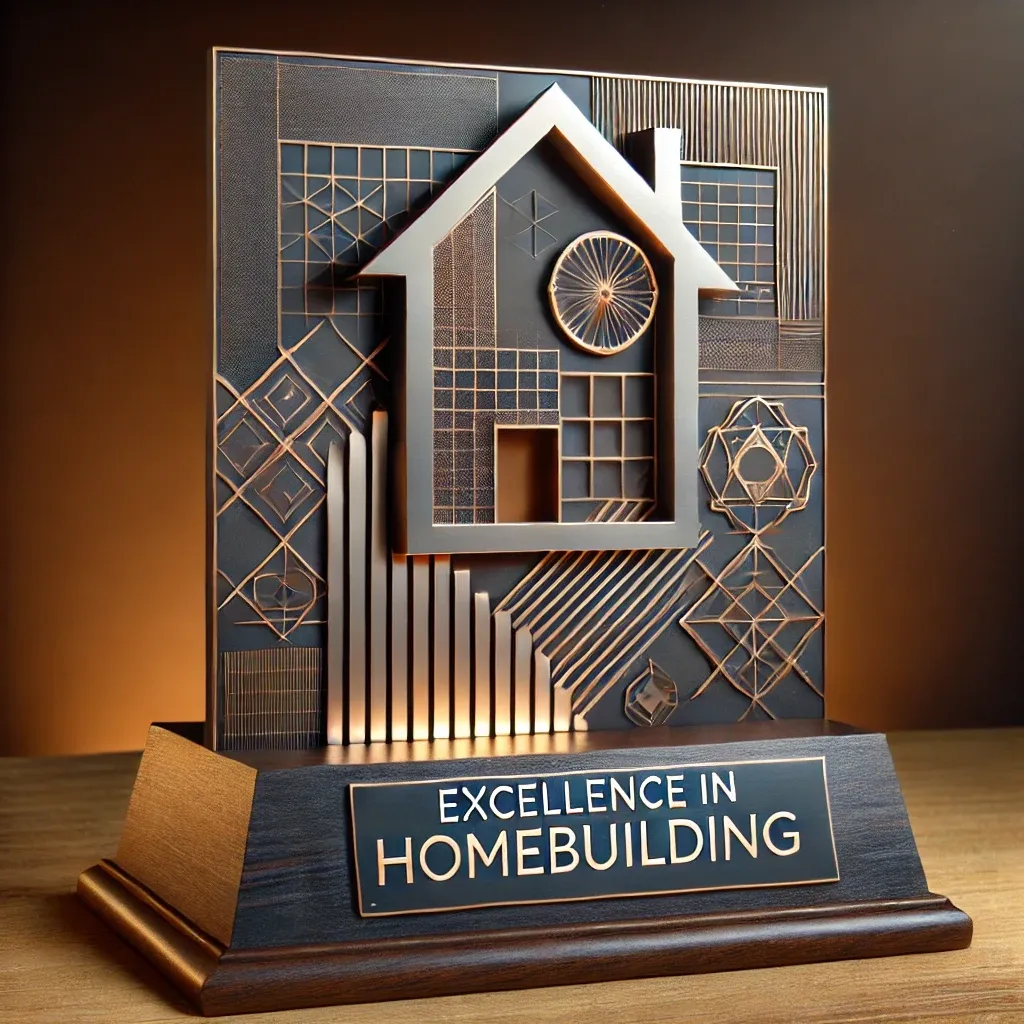Home Architecture Types Popular in South Carolina: A Discussion on Frank Lloyd Wright Concepts and Finding A Home Style That Fits You
The industry of home building in Myrtle Beach has been booming over the last thirty years, bringing people from all over the country (and world) to move to the beach. A common question in building a home is what type of style is popular in Myrtle Beach and South Carolina. In this article, we will explore some home architecture types that are popular in South Carolina and give a general overview of what is included in each style of home. One thing to know is that in modern homes, there are often hybrids of styles; however, this writing will give a good fundamental understanding of what each architecture entails.
The landscape of American residential architecture owes much to visionaries like Frank Lloyd Wright, whose organic approach to design revolutionized how we think about the relationship between homes and their surroundings. Wright’s philosophy that buildings should be in harmony with humanity and the environment continues to influence architects and homeowners alike. His Prairie School style, with its emphasis on horizontal lines, open floor plans, and integration with nature, laid the groundwork for many contemporary home designs we see today.
Drawing inspiration from Wright’s innovative spirit, let’s explore eight distinctive architectural styles that are popular in Myrtle Beach and South Carolina which have shaped American neighborhoods and continue to capture the imagination of homeowners across the country.
Low Country: Southern Coastal Charm
Originating in the coastal regions of South Carolina and Georgia in the late 1700s, Low Country architecture developed as a response to the hot, humid climate and flood-prone landscapes of the southeastern seaboard. Key Elements:
- Elevated Construction: Built on piers or stilts to prevent flood damage and improve air circulation
- Wide, Wraparound Porches: Known as “piazzas,” these deep porches often surround the house on multiple sides
- Tall Windows and Doors: Strategically placed for cross-ventilation
- Hipped or Gabled Roofs: Often with steep pitches and extended eaves
- Symmetrical Façades: Centered doors with evenly spaced windows
- Shutters: Functional rather than decorative, designed to protect against storms
- Light, Airy Color Palettes: Soft blues, greens, and neutrals that reflect heat
- Natural Building Materials: Primarily wood, with cypress and pine being traditional choices
Low Country homes embody southern hospitality with their welcoming porches and easy indoor-outdoor flow, creating spaces where community and family gatherings naturally extend beyond the home’s interior.
Ranch: Mid-Century Horizontal Harmony
The Ranch style emerged in the 1930s but dominated American suburban development in the post-World War II era. Its single-story, spread-out design reflected the abundance of land in developing suburbs and America’s growing automobile culture. Key Elements:
- Single-Story Layout: Long, low-slung profile hugging the landscape
- Open Floor Plans: Connected living spaces with good flow
- Attached Garage: Integrated into the home’s design rather than as a separate structure
- Large Windows: Picture windows and sliding glass doors connecting to outdoor spaces
- Simple, Low-Pitched Roofs: Usually with wide eaves
- Mixed Exterior Materials: Combinations of brick, wood, and stone
- Sliding Patio Doors: Leading to backyard patios or decks
- Minimal Exterior Ornamentation: Clean lines and functional design
Ranch homes prioritize ease of living and informal, family-centered spaces. The style’s horizontal emphasis and integration with the landscape shows clear influence from Frank Lloyd Wright’s Prairie School principles.
American Craftsman: Handcrafted Honesty
The American Craftsman style emerged in the early 20th century as part of the broader Arts and Crafts movement, which rejected mass production in favor of handcrafted quality. The style represented a return to simplicity, natural materials, and honest craftsmanship. Key Elements:
- Low-Pitched Gabled Roofs: With wide eave overhangs and exposed rafters
- Decorative Brackets: Supporting eaves with visible structural elements
- Covered Front Porches: Supported by tapered square columns
- Handcrafted Stone and Woodwork: Emphasizing natural beauty and craftsmanship
- Built-In Cabinetry and Seating: Incorporating storage and function into architectural elements
- Divided-Light Windows: Often with a distinctive pattern in upper sashes
- Natural Materials and Colors: Earth tones that blend with natural surroundings
- Stone or Brick Fireplaces: As focal points for gathering spaces
Craftsman homes celebrate the beauty of natural materials and the skill of craftsmanship, creating spaces that feel substantial, honest, and timeless.
Mediterranean: Sun-Soaked Elegance
Mediterranean architecture draws inspiration from the coastal countries bordering the Mediterranean Sea, particularly Spain, Italy, and Greece. This style gained popularity in the United States during the 1920s and remains beloved in warmer regions. Key Elements:
- Stucco Exteriors: Smooth or textured, typically in warm earth tones like terracotta, white, or cream
- Low-Pitched Red Tile Roofs: Clay tiles in a distinct S-pattern that efficiently sheds rainwater
- Arched Windows and Doorways: Creating elegant, soft transitions between spaces
- Wrought Iron Details: Decorative railings, gates, and window grilles
- Interior Courtyards: Private outdoor living spaces often centered around fountains or gardens
- Exposed Wooden Beams: Adding warmth and rustic charm to interior ceilings
- Terracotta Tile Flooring: Cool underfoot in warm climates
- Emphasis on Indoor-Outdoor Living: Multiple access points to patios, balconies, and loggia
Mediterranean homes exude a timeless elegance while providing practical features for warm-weather living, including thick walls that maintain cool interiors even during hot summer months.
Cottage: Storybook Charm
Cottage architecture draws inspiration from rural English and French countryside homes, though American interpretations often blend various influences to create homes that feel both quaint and comfortable. Key Elements:
- Steeply Pitched Roofs: Often with cross gables and asymmetrical lines
- Cozy Proportions: Modest footprints with an intimate scale
- Stone, Brick, or Clapboard Exteriors: Often with some combination for textural interest
- Multi-Paned Windows: Sometimes with diamond or leaded glass patterns
- Lush Landscaping: Gardens and greenery integrated with the architecture
- Charming Details: Window boxes, shutters, and picket fences
- Arched Doorways: Often creating a focal point entryway
- Exposed Beams and Woodwork: Creating warm, rustic interiors
Cottage homes evoke a sense of comfort and whimsy, with their human scale and craftsman-like details creating spaces that feel handcrafted rather than mass-produced. Contemporary: Clean Lines for Modern Living
Contemporary Architecture: Modern Styles for the Current Era
Contemporary architecture refers to styles of the present day, evolving with current trends and technologies. Today’s contemporary homes often emphasize sustainability, indoor-outdoor connections, and clean, uncluttered aesthetics. Key Elements:
- Geometric Forms: Bold shapes and asymmetrical compositions
- Large Windows: Floor-to-ceiling glass to maximize natural light and views
- Open Floor Plans: Flowing, multi-functional spaces
- Mixed Materials: Innovative combinations of concrete, steel, glass, and sustainable wood
- Flat or Low-Pitched Roofs: Often with large overhangs
- Indoor-Outdoor Integration: Disappearing walls, courtyard designs, and outdoor rooms
- Energy-Efficient Features: Solar panels, green roofs, passive heating/cooling
- Minimal Ornamentation: Emphasis on structural elements and material qualities
Contemporary homes showcase innovation while often maintaining Wright’s principles of organic architecture—designing in harmony with nature and creating spaces that enhance human experience.
Victorian: Ornate Historical Splendor
Victorian architecture encompasses several styles that flourished during Queen Victoria’s reign (1837-1901), characterized by ornate details, bold colors, and asymmetrical forms. The Industrial Revolution made elaborate architectural elements more accessible, leading to increasingly decorative homes. Key Elements:
- Complex, Asymmetrical Shapes: Irregular floor plans with multiple wings and projections
- Steep, Multi-Faceted Roofs: With decorated gables and sometimes towers or turrets
- Ornate Trim: Elaborate woodwork, spindles, and decorative brackets
- Bay Windows: Extending living space and bringing in additional light
- Wraparound Porches: With detailed railings and turned posts
- Vibrant Color Schemes: Multiple colors highlighting architectural details
- Textured Wall Surfaces: Fish-scale shingles, clapboards, or decorative masonry
- Tall, Narrow Windows: Often topped with decorative crowns
Victorian homes represent an era of optimism and prosperity, when homeowners proudly displayed their success through increasingly elaborate architectural statements. French Country: Rustic Provincial Elegance
French Country: A Basis of Home Styles With An European Flare
French Country architecture draws inspiration from the rural manor homes of Provence and other French countryside regions. This style blends rustic elements with elegant proportions to create homes that feel both sophisticated and comfortable. Key Elements:
- Steep Hip Roofs: Often with flared eaves and dormers
- Balanced, Symmetrical Façades: With centered doorways and evenly spaced windows
- Natural Stone or Stucco Exteriors: In warm, weathered finishes
- Blue-Gray Accents: Particularly on shutters and doors, contrasting with warm stone
- Curved Arches: Over doors, windows, and interior passageways
- Tall Windows: Often with French doors opening to outdoor spaces
- Rustic Beams and Stone Floors: Creating authentic old-world interiors
- Soft, Muted Color Palettes: Inspired by the lavender fields and sunflower meadows of Provence
French Country homes achieve a perfect balance between formal elegance and rustic comfort, creating spaces that feel at once sophisticated and welcoming. The Continuing Legacy of Architectural Innovation
While each of these styles has distinct characteristics, modern residential architecture often blends elements from multiple traditions. Today’s architects and homeowners frequently draw inspiration from Frank Lloyd Wright’s principles—creating homes that respond to their environment, utilize natural materials honestly, and prioritize human comfort and connection to nature.
Whether you’re drawn to the rustic elegance of French Country, the handcrafted details of American Craftsman, or the clean lines of Contemporary design, understanding these architectural traditions can help you appreciate the thoughtful elements that make each home style unique. More importantly, it can guide you in creating or choosing a home that not only looks beautiful but truly enhances the way you live. If you’re interested in having a home designed for the Myrtle Beach area please feel free to reach out to us for tips here.







